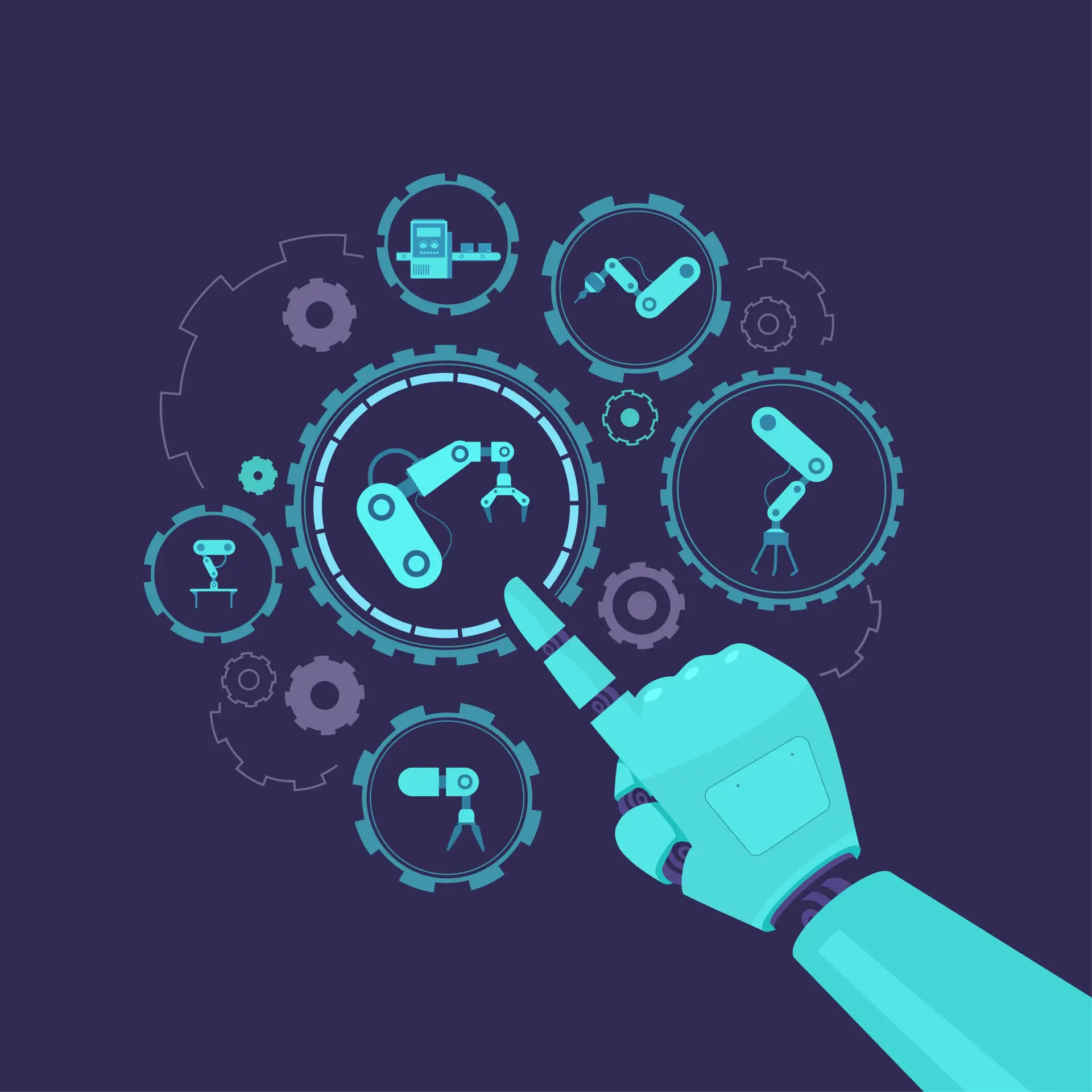AI vs. Automation: What’s Best for Your Organization?
Introduction
AI vs. Automation
In today’s era of rapid technological advancement, businesses across Saudi Arabia—and the GCC as a whole are facing a pivotal question: should they invest in artificial intelligence (AI), automation, or both? While the terms are often used interchangeably, AI and automation serve different purposes, require different infrastructure, and deliver distinct value. With Vision 2030 accelerating the digital transformation of the Kingdom, choosing the right path is critical for long-term competitiveness and sustainability.
This guide explores the differences between AI and automation, their respective benefits and challenges, how they align with Saudi Arabia’s national goals, and which strategy may be better suited for your enterprise, depending on your sector, maturity level, and goals.
Section 1: Defining AI and Automation
What is Automation?
Automation refers to the use of machines or software to perform repetitive, rule-based tasks without human intervention. Common in manufacturing, logistics, and administrative workflows, automation increases efficiency by reducing human error and operational costs.
Examples include:
- Robotic Process Automation (RPA) in HR and finance
- Assembly line robotics in industrial sectors
- Barcode-based warehouse management systems
What is Artificial Intelligence?
AI involves systems that can perform tasks requiring human-like cognition, such as learning, reasoning, problem-solving, and decision-making. Unlike automation, AI adapts and evolves by learning from data.
Examples include:
- Predictive analytics for supply chain demand
- Natural Language Processing (NLP) for chatbots and sentiment analysis
- Machine learning models in fraud detection and customer segmentation
Section 2: Core Differences Between AI and Automation
| Feature | Automation | Artificial Intelligence |
|---|---|---|
| Purpose | Perform predefined, repetitive tasks | Simulate human cognition and decision-making |
| Adaptability | Rule-based, rigid | Data-driven, flexible |
| Learning | No | Yes (machine learning, deep learning) |
| Use Cases | Invoice processing, factory robotics | Chatbots, image recognition, demand forecasting |
| Skill Requirements | Process mapping, software integration | Data science, ML engineering, cloud computing |
Section 3: Business Use Cases in the Saudi Context
AI Use Cases in Saudi Arabia
- Healthcare: AI for radiology diagnostics and triage (e.g., Tertiary hospitals in Riyadh)
- Energy: Predictive maintenance in oil rigs and pipelines (e.g., Aramco AI Labs)
- Retail: Hyper-personalized customer journeys powered by ML
- Education: Adaptive learning platforms in public and private schools
- Government: Arabic NLP-driven citizen service portals
Automation Use Cases in Saudi Arabia
- Logistics: Barcode scanning and conveyor belt systems in warehouses
- Government: Document digitization and RPA-based approval workflows
- Manufacturing: Smart robots in NEOM and industrial zones
- Banking: Automated loan processing and onboarding via RPA
- Transportation: Automated fare collection systems in metros and buses
Section 4: Strategic Fit – When to Choose AI Vs Automation, or Both
Choose Automation When:
- You need immediate efficiency in predictable workflows
- Your data maturity is low or scattered
- You operate in high-volume, rule-based processes
Choose AI When:
- You want to derive insights and make decisions from complex datasets
- You aim to personalize customer experience or forecast future trends
- Your organization is ready to invest in data infrastructure
Choose Both When:
- You want to automate decision-making and not just tasks
- You need scalable systems that evolve with changing inputs
- You have both structured and unstructured data to handle
Section 5: Cost and ROI Comparison Initial Investment
- Automation: Lower (licenses, installation, minimal IT upgrades)
- AI: Higher (data scientists, model training, cloud costs)
Long-Term ROI
- Automation: Faster ROI in repetitive environments (e.g., 6–12 months)
- AI: Higher ROI over time due to predictive capabilities and adaptability
Example: A logistics firm may gain immediate savings through warehouse automation (RPA) but only unlock strategic growth by using AI for demand forecasting and route optimization.
Section 6: Alignment with Vision 2030
Saudi Arabia’s Vision 2030 places AI and digital transformation at its core. The Kingdom has:
- Created the Saudi Data and AI Authority (SDAIA)
- Deployed National Strategy for Data and AI (NSDAI)
- Invested in mega-projects like NEOM, The Line, and Red Sea, all of which rely on AI and automation
AI and Vision 2030 Alignment:
- National AI ethics framework
- Talent development (20,000+ AI specialists)
- Innovation in Arabic NLP, healthcare, and energy
Automation and Vision 2030 Alignment:
- Smart city infrastructure
- e-Government transformation
- Industrial digitization in key economic zones
Section 7: Challenges of Implementation
AI Challenges
- Data quality and availability
- Talent shortage
- Regulatory ambiguity
- Model bias and explainability
Automation Challenges
- High customization cost for legacy systems
- Rigid workflows are not adaptable to change
- Risk of employee resistance
Section 8: Case Studies from the GCC
Case Study 1: AI in Banking – Al Rajhi Bank
Implemented AI-based customer segmentation for personalized product offerings, leading to a 30% increase in cross-sell rates.
Case Study 2: Automation in Government – Absher Platform
Automated citizen services such as passport renewal and visa issuance, reducing wait times by over 50%.
Case Study 3: AI + Automation in Logistics – STC Logistics
Used AI for predictive delivery times and automation for package sorting, resulting in 25% faster order processing.
Section 9: Recommendations for Enterprises in Saudi Arabia
- Start with a digital readiness audit
- Align use cases with Vision 2030 goals
- Combine automation for quick wins and AI for strategic gains
- Invest in local partnerships (e.g., Semantic Brains, SDAIA, KAUST)
- Build a hybrid talent pipeline of engineers and domain experts
- Monitor KPIs like process time, accuracy, and customer satisfaction
Conclusion
AI and automation are not competing technologies—they are complementary tools that can transform Saudi businesses when applied correctly. For enterprises in Saudi Arabia, the right strategy involves balancing both: using automation to streamline current operations and AI to future-proof your business. With national support, emerging tech ecosystems, and growing talent pipelines, there has never been a better time to adopt AI and automation as twin pillars of your enterprise’s digital transformation.
FAQs
Q1: Is AI more expensive than automation? Yes, initially. AI requires investment in data infrastructure and skilled talent, but its long-term ROI is typically higher.
Q2: Can AI replace automation? Not entirely. While AI can enhance automation, traditional automation remains essential for rule-based tasks.
Q3: What is RPA? Robotic Process Automation—software that automates structured business processes without changing existing systems.
Q4: How can Saudi companies prepare for AI adoption? By improving data quality, building internal talent, and aligning initiatives with national strategies like SDAIA’s guidelines.
Q5: Are there compliance concerns with AI in KSA? Yes. Enterprises must follow SDAIA’s ethical guidelines and comply with the Personal Data Protection Law (PDPL).
Read article


